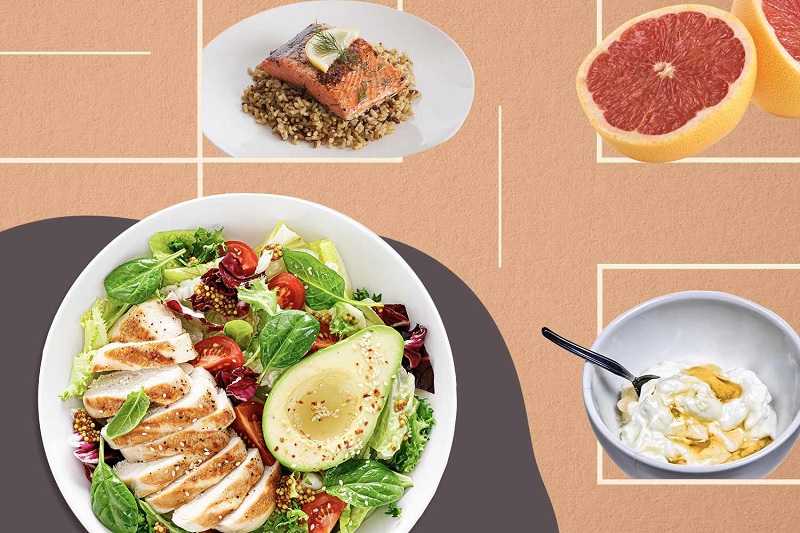Healthy meal planning is an essential aspect of maintaining a balanced lifestyle. It involves making thoughtful and deliberate choices about the foods you consume, aiming to provide your body with the necessary nutrients while promoting overall well-being. By following a structured meal plan, you can enhance your energy levels, manage your weight, and reduce the risk of chronic diseases.

Healthy Meal Planning, Understand Your Nutritional Needs
Start by understanding your nutritional needs. Your meals should incorporate a variety of food groups, including lean proteins, whole grains, healthy fats, and a colorful array of fruits and vegetables. These components offer vital vitamins, minerals, fiber, and antioxidants that support various bodily functions.
Moreover, Pportion control plays a pivotal role in healthy eating. Balancing portion sizes prevents overeating and ensures that you’re getting the right amount of nutrients without excess calories. A well-balanced plate comprises half vegetables and fruits, one-quarter lean protein, and one-quarter whole grains or starchy vegetables.
Preparation
Preparation is key. Devote some time to plan your meals for the week, considering your schedule and commitments. This helps you avoid last-minute unhealthy food choices due to time constraints. Prepare a shopping list based on your meal plan to minimize impulse purchases of processed or sugary items.
Incorporate a variety of colors into your diet. Different colored fruits and vegetables provide a range of antioxidants and phytochemicals that offer unique health benefits. Aim for at least five servings of fruits and vegetables daily to support your immune system and reduce the risk of chronic diseases.
Choose Lean Protein Sources
Choose lean sources of protein, such as poultry, fish, beans, lentils, and also tofu to healthy meal planning . These options are rich in essential amino acids and are lower in saturated fats compared to red meats. Including plant-based protein sources also contributes to a more environmentally friendly diet.
Prioritize whole grains over refined ones. Whole grains like quinoa, brown rice, whole wheat pasta, and oats are higher in fiber and nutrients. So that helping to stabilize blood sugar levels and promote digestive health.
Healthy fats are crucial for brain and heart health. Incorporate sources like avocados, nuts, seeds, and olive oil into your meals. These fats support nutrient absorption and keep you feeling full and satisfied.
Limit added sugars and processed foods. Opt for natural sweeteners like honey or maple syrup, and be cautious of hidden sugars in packaged products. Minimizing processed foods reduces your intake of unhealthy fats, sodium, and additives.
Stay hydrated by drinking plenty of water throughout the day. Water is essential for digestion, metabolism, and overall bodily functions. Limit sugary beverages and excessive caffeine intake.
Remember that flexibility is key. While planning is important, allow room for occasional indulgences. Treating yourself in moderation can help you maintain a sustainable and balanced approach to healthy eating.
Healthy meal planning involves a mindful selection of nutrient-dense foods in appropriate portions. By prioritizing fruits, vegetables, lean proteins, whole grains, and healthy fats, while minimizing sugars and processed foods, you can achieve and sustain a wholesome and vibrant lifestyle.
